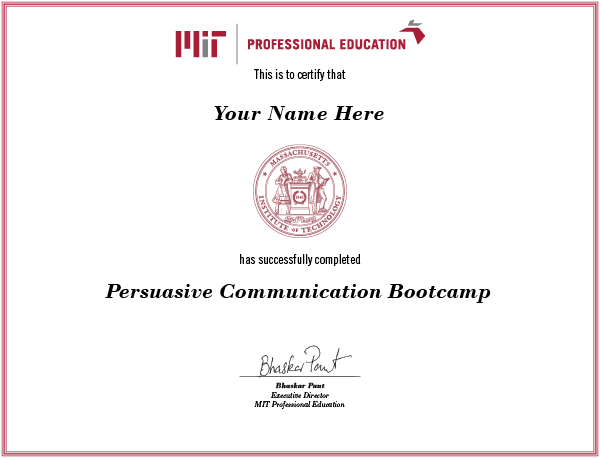Ready to turn your data and technical knowledge into meaningful insights that engage and persuade stakeholders? In this four-day course, you’ll hone your communication skills in four essential areas: public speaking, critical thinking, visual persuasion, and audience adaptation. A unique feature of this program is that all participants will meet for one-on-one diagnostic meetings with the course instructor. Supplemented with these one-on-one sessions, and students participating in discussions and hands-on activities, you’ll master actionable strategies for quantifying your conversations and moving your projects and organization forward.
This course may be taken individually or part of the Professional Certificate Program in Innovation & Technology OR THE PROFESSIONAL CERTIFICATE PROGRAM IN BIOTECHNOLOGY & LIFE SCIENCES.
The type of content you will learn in this course, whether it's a foundational understanding of the subject, the hottest trends and developments in the field, or suggested practical applications for industry.
How the course is taught, from traditional classroom lectures and riveting discussions to group projects to engaging and interactive simulations and exercises with your peers.
What level of expertise and familiarity the material in this course assumes you have. The greater the amount of introductory material taught in the course, the less you will need to be familiar with when you attend.




